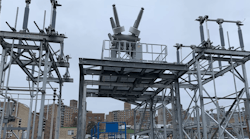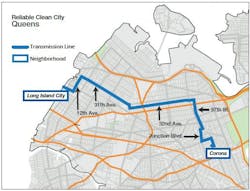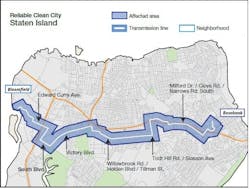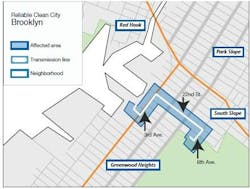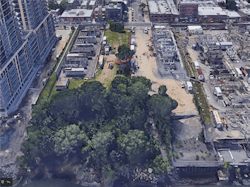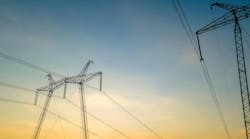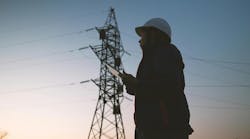When New York state adopted a regulation limiting nitrogen-oxide emissions from peaker power plants, Consolidated Edison Co. of New York Inc. was supportive. Con Edison has reduced its own nitrogen-oxide emissions by 70% since 2005, earning the utility recognition as a leader in the region’s clean energy transition.
However, the utility realized it would need the talent and creativity of its 13,000 team members to find solutions that ensured continued reliable service to its dense service area once the new rule went into effect. Four years after the adoption of the regulation, Con Edison is well on its way toward completing
three new underground 138-kV transmission lines that will carry increasing amounts of renewable energy to customers.
The lines, which earned the support of the Sierra Club, are part of the utility’s Reliable Clean City program, a major component of Con Edison’s strategy in transitioning from fossil fuels to renewables. The company is determined to continue providing customers with industry-leading reliability. Its reliability is essential in a the city that is home to the World’s Financial Capital, important transit systems, world-class hospitals and schools, and a 24/7 lifestyle.
New Energy Landscape
The new 138-kV lines are like giant extension cords. Each cable will make it possible for renewable energy — flowing from upstate New York and Canada to the utility’s service area — to reach more customers. When complete, the lines will carry a total of 900 MW.
In 2026, clean power will flow from the Champlain Hudson Power Express via a 339-mile (546-km) cable that runs from the Canadian border to a converter station on Con Edison property in western Queens, New York. The lines will also carry some of the 9000 MW of offshore wind power New York is adding to its portfolio.
The Reliable Clean City projects are an example of how Con Edison is thriving in the new energy landscape. The utility must move more quickly and plan with a longer-term perspective than in the past, as the need for power is growing more rapidly than at any time in history due to the electrification of buildings and vehicles.
In May 2023, crews completed the first project, a 6-mile (9.7-km) line that connects two substations in Queens. This line and associated substation upgrades enabled the closure of a 558-MW fossil fuel-fired peaker plant in the western Queens neighborhood of Astoria.
The symbolism of this site’s transformation is notable. NRG Energy sold the property to Beacon Wind, which will create a point of interconnection for its planned offshore wind turbine projects.
Time and Budget
Thanks to creative construction processes, Con Edison finished its Queens line and associated upgrades on substations in Corona and Long Island City, New York, in two and a half years. The utility budgeted US$275 million but now expects to save $40 million.
In Brooklyn, New York, a 1-mile (1.6-km) feeder will connect two substations, while in Staten Island, New York, a 9-mile (14.5-km) cable will connect two substations on opposite sides of the island. These projects will start serving customers by 2025.
The New York Department of Environmental Conservation’s 2019 rule required peaker units with 15 MW of capacity or more to comply with the new limits from May through September, the so-called ozone season. This season is when air quality is the worst and demand for power peaks in New York, as customers use their air conditioners to stay comfortable.
The regulation was well-founded. When coupled with volatile organic compounds in the atmosphere, nitrogen-oxide emissions lead to the formation of ozone and smog. Elevated ozone concentrations can irritate people’s eyes and respiratory systems as well as aggravate the symptoms of asthma sufferers.
The regulation also was consistent with New York State’s Climate Leadership and Community Protection Act, which sets out the most ambitious environmental goals in the U.S. As Con Edison makes clear in its Clean Energy Commitment, the utility supports the law and is building a grid to carry 100% clean energy by 2040. It offers incentives for building electrification and the installation of electric vehicle charging stations, as part of transitioning away from fossil fuels to a net-zero economy by 2050.
If a peaker unit could not comply, the owner had two choices: Stop operations during the ozone season or use renewable generation or battery storage to get emissions to the allowable level. Many of the peaking units have played a critical role by supplying power to certain areas, known as transmission load areas, in New York City. These are transmission-constrained areas where meeting demand requires local generators due to transmission limitations.
The fossil fuel-fired, simple-cycle combustion turbines run at times of high demand and are low in efficiency and high in emissions.
The Right Solution
In 2020, The New York Independent System Operator and Con Edison agreed that, with the peakers unavailable, the local transmission system could not reliably serve the forecasted load in New York City. The utility studied numerous options to solve this issue, including building a new transmission substation, expanding an existing transmission substation and transferring one or more networks to new distribution area substations. All these options were too costly.
The utility also considered whether deploying renewable generation or energy storage within the transmission load areas would be the right solution. However, it was clear the lack of adequate space within the transmission load areas meant neither large-scale solar generation nor energy storage were viable solutions. Also, storage in these areas would not fully address the reliability needs because the deficiencies can last up to 14 hours a day for consecutive days, longer than storage could support.Once Con Edison settled on the Reliable Clean City program as the right solution, it turned to execution of the first project in Queens, which had to be completed by May 2023. Under a tight timetable, the utility had to find a way to work all 12 months, rather than halting substation work in the summer to avoid taking feeders out of service during high demand.
The utility decided if it needed to do below-grade work at a station, it would reinforce those structures — instead of demolishing them and building anew. This approach resulted in the utility being able to perform work without taking feeders out of service, meaning it could work throughout the summer.
The utility also moved the project along by hiring an engineering, procurement and construction contractor to manage the project from design to construction.
Another key to its success with the Reliable Clean City program in Queens was early, open communication with elected officials, neighborhood groups, business organizations and other stakeholders. The utility created new communication channels and held open houses to ask what it could do to accommodate customers before starting work. It also sent mailers, texted messages and placed signs along the construction route. Con Edison’s approach to the Queens project built trust and reduced complaints as work progressed. The utility did not have to stop a job to reassure the community.
All-In Approach
Thanks to the resourcefulness of the utility’s engineers and planners, as well as the skilled work of the union workers in the field, the utility is building projects that will bring numerous benefits. Not only will the Reliable Clean City program help to facilitate the transition away from fossil fuels and provide a pathway to deliver clean energy to customers, but it also will provide redundancy for existing transmission infrastructure, boosting reliability.
Safe, reliable service — the goal of every utility — takes on even greater importance for Con Edison because of its particularly dense service area. The utility is now embracing a third imperative: leading the region’s fight against climate change.
The Reliable Clean City projects are part of Con Edison’s all-in approach to lower carbon emissions and help New York, both the state and city, meet their environmental goals while continuing to deliver first-class reliability. The utility also has begun construction on the Brooklyn Clean Energy Hub, a separate project that will strengthen grid reliability while potentially acting as a plug-in point for future offshore wind farms. In addition, the utility has robust energy-efficiency programs that have helped customers in New York City and Westchester County, New York, connect 60,000 rooftop solar projects with the cumulative capacity to produce 540 MW of clean, renewable power. The combined efforts of Con Edison, its customers, regulators and elected leaders are ensuring a safe, sustainable future for those who live and work in this great city.
Walter Alvarado is vice president of system and transmission operations for Consolidated Edison Company of New York, Inc. He has responsibility for transmission planning, system operations, transmission operations and transmission project development for 3.6 million customers. Before assuming his current position in 2016, he served as vice president, Staten Island electric operations. Alvarado has held numerous other positions since joining the utility as a management intern in 1992. He holds a master’s degree in computer science and a bachelor’s degree in mechanical engineering from New York University Polytechnic.
